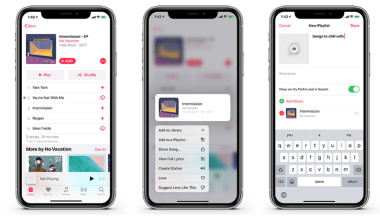Have you ever wondered how to song and create music that resonates with listeners? Songwriting is an art that combines creativity, technique, and emotion. Whether you’re looking to express yourself, share a story, or create something people can hum along to, this guide will teach you how to craft a song from start to finish.
With step-by-step advice, beginner-friendly techniques, and tips for overcoming creative blocks, this blog will help you learn how to song and start your musical journey.
Why Learn How to Song?
Before diving into the mechanics of songwriting, it’s important to understand the value of this creative pursuit. Writing a song allows you to:
- Express Emotions: Share your joys, sorrows, and experiences with the world.
- Tell Stories: Transform your thoughts into narratives people can relate to.
- Connect with Others: Songs can evoke shared emotions and memories.
No matter your background or skill level, learning how to song can be deeply rewarding.
Key Elements of a Song
To understand how to song, you need to familiarize yourself with the key components of a song. These include:
- Lyrics: The words that tell the story or convey the emotion.
- Melody: The tune or sequence of notes that carry the lyrics.
- Chords: The harmonic foundation of the song.
- Rhythm: The timing and beat that make the song dynamic.
- Structure: The arrangement of verses, choruses, and bridges.
Each of these elements contributes to the overall impact of your song.
Finding Inspiration
Every great song starts with inspiration. If you’re stuck wondering where to begin, try these tips:
- Reflect on Personal Experiences: Draw from your own life events or emotions.
- Observe Your Surroundings: Nature, people, and everyday life can spark ideas.
- Listen to Other Songs: Analyze your favorite music for themes, structures, and melodies.
- Write Freely: Keep a journal to jot down thoughts, phrases, or ideas.
When you focus on what moves you, the process of learning how to song becomes more natural.
Choosing a Theme
Deciding on a theme is essential when learning how to song. A theme gives your song direction and helps it resonate with listeners.
Popular Song Themes
- Love: From romantic passion to heartbreak.
- Dreams: Aspirations and personal growth.
- Celebration: Joy, milestones, and life’s big moments.
- Struggles: Overcoming challenges and hardships.
For example, if your theme is about love, think about what angle you want to explore: falling in love, unrequited feelings, or moving on from heartbreak.
Writing Lyrics
The lyrics are the heart of your song. They tell your story and convey the emotion behind your music.
Steps to Write Great Lyrics
- Start with a Hook: Create a catchy or memorable line that sums up your song.
- Build Around Your Theme: Use words and imagery that align with your theme.
- Keep It Simple: Avoid overcomplicating your lyrics. Clear, relatable words work best.
- Use Repetition: Reinforce key messages with repeated phrases or lines.
Crafting the Melody
The melody is the tune that listeners will hum or sing along to. Here’s how to create a melody when learning how to song:
Tips for Crafting a Melody
- Experiment with Humming: Sing random notes and record yourself.
- Focus on Repetition: A strong melody often repeats certain phrases or patterns.
- Match Your Lyrics: Ensure the melody complements the emotion of your lyrics.
Remember, a simple melody is often the most memorable.
Building Chords
Chords provide the harmonic structure of your song. Beginners can start with basic chord progressions that are easy to play and sound great.
Popular Chord Progressions
- C – G – Am – F: Perfect for pop and rock songs.
- G – D – Em – C: A staple in many ballads.
- A – E – F#m – D: Uplifting and versatile.
Experiment with different progressions to find the one that fits your melody and mood.
Structuring Your Song
A well-structured song keeps your listeners engaged from start to finish.
Common Song Structure
- Verse: Introduces the story or theme.
- Chorus: The emotional or melodic highlight of the song.
- Bridge: A contrasting section that adds variety.
For example, your structure might look like this:
Verse 1 → Chorus → Verse 2 → Chorus → Bridge → Chorus
Adding Emotional Depth
Songs are all about emotion. To make your song impactful, focus on connecting with your listeners.
Ways to Add Emotion
- Use Imagery: Paint vivid pictures with your words.
- Vary Dynamics: Build tension and release to create emotional highs and lows.
- Stay Authentic: Write from personal experience to make your song relatable.
Recording and Sharing Your Song
Once your song is complete, recording is the next step.
Tips for Recording Your Song
- Start Simple: Use free software like GarageBand or Audacity.
- Invest in Basics: A good microphone and quiet space improve quality.
- Experiment with Layers: Add harmonies, instruments, or effects to enhance your song.
Share your song on platforms like YouTube, SoundCloud, or Spotify. You can also sell your music on Beatport to reach a global audience.
Overcoming Common Challenges
If you feel stuck or discouraged, remember that songwriting is a skill that improves with practice.
Common Challenges and Solutions
- Writer’s Block: Take a break, listen to music, or seek feedback.
- Melody Issues: Experiment with different tempos or rhythms.
- Fear of Sharing: Start by sharing with close friends or family.
Conclusion:
Learning how to song is a fulfilling and creative journey. Whether you’re writing for fun, self-expression, or professional goals, the process is as rewarding as the result.
So, grab a notebook, pick up an instrument, and let your ideas flow. Your first song might be the start of something amazing.
Related Articles:
For further reading, explore these related articles:
- How to Write Your Own Song – Step-by-Step Beginner’s Guide
- How to Write a Song for Beginners – Easy Step-by-Step Guide
- Step-by-Step Guide: How to Upload Song on Instagram for Maximum Reach
For additional resources on music marketing and distribution, visit Deliver My Tune.






